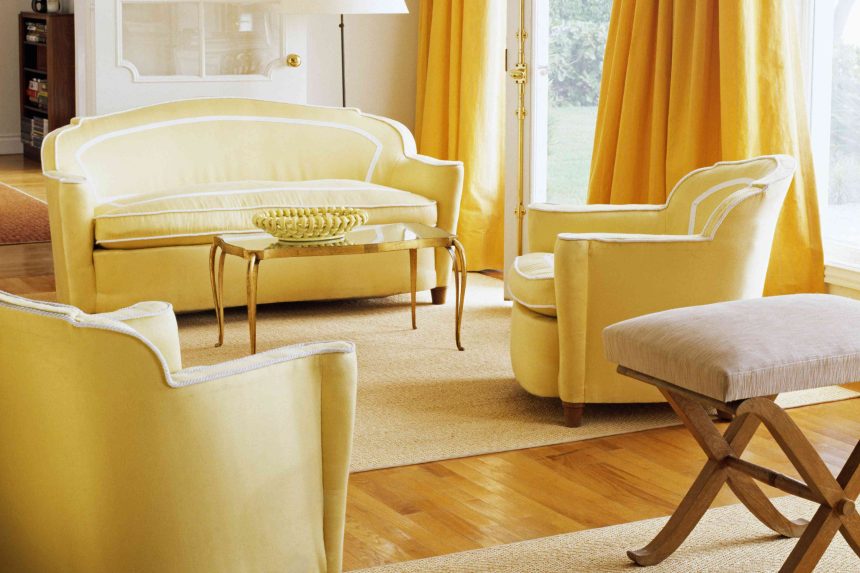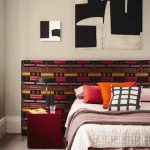Hiring an interior designer can seem a bit intimidating and vulnerable. You might worry they’ll insist on tossing everything you own and starting from scratch. In reality, though, designers often encourage keeping unique and meaningful pieces, like your grandmother’s antique hutch or that statement mirror you snagged on sale. However, there are some items designers frequently tell their clients to get rid of, time and time again—and it’s typically the pieces that don’t fit the space, the style, or the functional needs of the people living in the home.
“Designing a home from a blank slate is a luxury most of us don’t have,” says interior designer and HGTV star Shay Holland. “Too often we indulge in hasty or trendy purchases just to fill our spaces. We hold on to meaningless items to avoid living with emptiness even though breathing room is what we need to clarify our creative vision.”
So, if you’re looking to elevate your home design and edit out the items that don’t serve your space, here are the most common things designers tell their clients to get rid of.
Matching Furniture Sets
While that matching sofa, sectional, and loveseat set might be a good deal, that doesn’t mean it’s the right aesthetic choice. “Nothing screams cold and sterile like matchy-matchy furniture sets straight from the showroom floor,” Holland says. “You want your home to showcase your personality—not the retailer’s—so swap the matching sofa, loveseat and chairs for mixed pieces that add visual interest and character.”
If you don’t want to fully replace a chair or sofa that’s in good condition and fits your space, you can always re-upholster it update it with a slipcover, instead of getting rid of it altogether.
Mass-Produced Decor
Mass-produced decor and artwork aren’t all that exciting and don’t really do much to elevate your home, Holland says. “Even if you have messy pets and rambunctious toddlers, cheaply-manufactured, mass-produced decor is a poor choice for your home—and the planet,” she explains. “Donate, toss, or give away as much generic, plastic, and MDF [medium-density fiberboard] items as possible.”
Instead, Holland advises taking your time to curate one-of-a-kind and handmade creations, vintage pieces, family heirlooms, and meaningful decor that tells your unique story. “Inject even more warmth and personality by embracing imperfections in natural materials, like hand-carved wooden items and honed stone,” she says.
Builder-Grade Selections
There’s nothing designers dislike more than builder-grade selections. If you’re unfamiliar with this terminology, builder grade generally refers to the finishes you’ll find in new homes and condos, like basic cabinetry hardware and laminate countertops. Builders and developers often buy these items in bulk to cut down on costs. But this is far from a creative choice.
“Nothing transforms a home more than getting rid of builder-grade selections,” Holland says. “Take your space from generic to unique with easy DIYs, like updating cabinet hardware, swapping out switch plates and outlet covers, adding window treatments, and painting walls, without making structural changes. Even renters can take advantage of easily reversible cosmetic upgrades.”
High-Maintenance Pieces
You might love a delicate chair or a sofa made of a material that won’t stand up to the wrath of your young children, but they are often more trouble than they are worth. “Too often we fall for trends and luxury options that are impossible to keep up, like mirrored or reflective pieces popular with the Art Deco trend, for example,” Holland tells me.
These items just require too much work to maintain. “Unless you’re one for constant dusting and wiping off fingerprint smudges, these surfaces aren’t worth the headache,” she continues. “Choices such as high-pile carpet in a sandy beach house or a square-edged glass coffee table in a home with [young kids] are impractical. Think about how you want to spend your time and get rid of anything that doesn’t support your vision or your lifestyle.”
Poor Window Treatment Choices
Ashley Macuga of Collected Interiors says that one of the top items she removes from her clients’ homes are shutters. “I know you spent a fortune installing them in the early part of this century, but they block out natural light, and hide the beauty of interior windows,” she says. “It’s incredible what happens to a space when they are no longer there.”
Once the shutters are removed, she likes to incorporate a pattern and texture by installing Roman shades or drapes.
Lindsie Davis of Blueberry Jones Design says that bad window treatments are something she also tells clients to get rid of all the time. “Skimpy panels, awkward lengths, or misplaced hardware don’t just affect your windows—they throw off your entire space’s proportions,” she says. “Think of drapery as the frame for both your room and the view beyond; when done properly, it elevates. When done poorly, it’s the first thing people notice.”
Lifeless Throw Pillows
While you might love your throw pillows, they have a finite life. “Those deflated, shapeless pillows aren’t doing your sofa any favors,” says Davis. “When in doubt, it’s probably time for an upgrade—whether that’s with new covers, down-filled inserts, or both. Even this simple swap can completely shift the vibe of a living space.”
Anything Damaged
Damaged items aren’t doing your home any favors, according to Carly Filbin of Blue Jay Interiors. “This category includes sofas that your cat has turned into a scratching post, tables that your dog has used as a chew toy, and even your grandmother’s settee that you dislike sitting on,” she says. “If something is damaged beyond repair or is uncomfortable, it is no longer functional. It’s time to replace it with something you will love and actually use.”
Inappropriately Sized Items
Scale is crucial for creating a beautiful and comfortable home. This applies to both furniture and accessories. “We recommend removing any items that create an overcrowded space,” Filbin says. “Overwhelming environments prevent viewers from finding a place for their eyes to rest. This often happens when every inch of a wall is filled or when knickknacks are scattered everywhere. Instead, we suggest thoughtfully and intentionally grouping items together,” explains Filbin.
The same rule also applies to items like light fixtures. “If fixtures are too big or too small, they will draw your eye for all the wrong reasons,” the designer adds.








